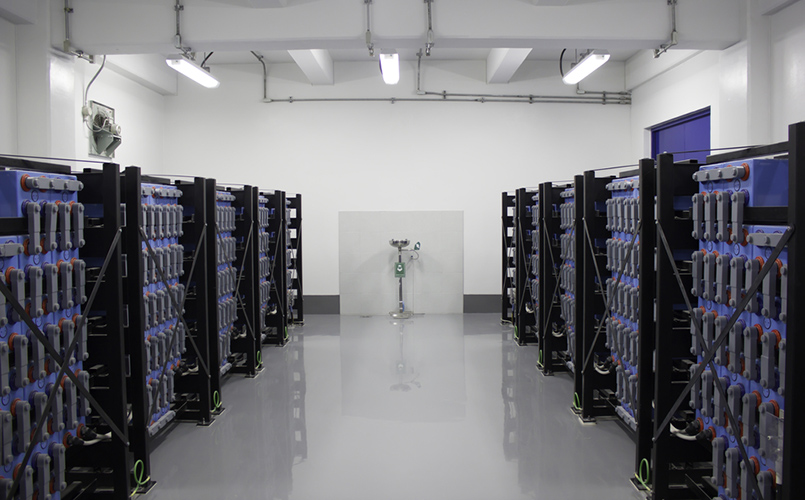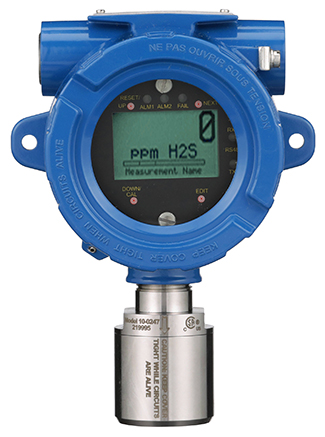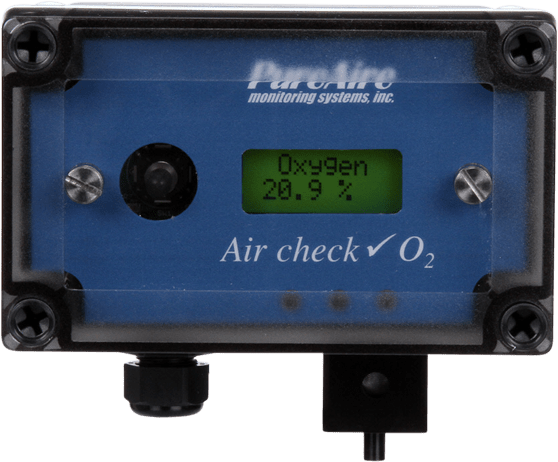Monitoring Off-Gasses to Guard Against Thermal Runaway Risk with Li-Ion Batteries

Lithium-Ion Batteries
Rechargeable lithium-ion (“li-ion”) batteries (comprised of cells in which lithium ions move from a negative electrode through an electrolyte to a positive electrode during discharge—and the other way around when charging) were first described conceptually in the 1970s.
Following initial prototype development in the 1980s, li-ion batteries became commercially viable in subsequent decades, and they are now commonly used in a variety of portable consumer electronic devices, including cell phones, laptops, and tablets.
Li-ion batteries also provide power for a broad array of automotive, aerospace, and commercial energy applications, such as electric vehicles (i.e., cars, trucks, buses, and trains), drones and satellites, and battery energy storage systems (or “BESS”, which enable power system operators and utilities to store energy—including that generated from renewable power sources—for later discharge and distribution as demand necessitates).
Analysts expect that the global size of the lithium-ion battery market will grow from some $40 billion in 2021 to over $115 billion by 2030, as users increasingly appreciate li-ion batteries for their rechargeability, large storage capacity, slow loss of charge when not in use, and high power to weight ratio.
However, those involved with li-ion battery production and usage must live with the inherent safety hazards involved with these batteries, as their electrolytes are flammable by nature, which can, at high temperatures, lead to fires and explosions.
Thermal Runaway Can Impact Lithium-ion Battery Safety
In 2019, a battery failure at an Arizona BESS facility operated by the Arizona Public Service (“APS”) utility resulted in an explosion that caused serious injuries to a number of firefighters. The APS site housed over 10,000 lithium-ion battery cells in 27 battery racks within a relatively small battery storage enclosure.
Authorities believe that the explosion, which they attributed to a chain reaction process knows as “thermal runaway”, was initiated by a failure in just one li-ion battery cell, which leaked explosive gas which, in turn, combusted as soon as the firefighters, responding to an alarm and reports of gas clouds emanating from the structure, opened the door and let oxygen into the storage enclosure.
Described simply, thermal runaway is an exothermic reaction in which li-ion battery cell temperatures rise rapidly in an uncontrollable self-exacerbating fashion. As cell temperatures rise, flammable and/or toxic gasses are vented (that is, “off-gassed”) from the battery.
While the gasses may not ignite immediately, the risk for a potential gas explosion remains. Ultimately, pressure from the buildup of gas can cause the cell to rupture and release toxic or explosive gasses (most commonly, carbon dioxide, carbon monoxide, fluorine, hydrogen, and methane, though there may be others).
An after-incident report commissioned by APS and released in 2020 listed a number of incidents from 2006-2017 involving thermal runaway events in lithium-ion batteries, including one on a tugboat in 2012 and another on a Boeing 787 in 2013.
There have been other such events as well including, memorably, a 2017 fire and explosion in Houston, TX on a train car that was transporting lithium-ion batteries to a recycling facility. The explosion broke windows in nearby buildings and, reportedly, sent a chemical stench throughout downtown Houston.
Off-Gas Monitoring Can Reduce the Risk of Thermal Runaway
Lithium-ion battery off-gassing, and subsequent thermal runaway, can occur due to manufacturing defects, mechanical damage or failures, overvoltage, excessive heat, or improper handling or storage.
Unfortunately, without reliable gas detectors in place, there is no sure way to know, until it is too late (i.e., when thermal runaway has actually started), that battery cells have in fact begun to off-gas.
To detect off-gasses, and protect against thermal runaway, best practices call for manufacturers, researchers, facility operators, storers, transporters, and others working with li-ion batteries to install high-quality gas detection monitors.
The gas detectors should continuously monitor all relevant areas and, if off-gas concentrations are detected, activate alarms and turn on ventilation systems.
PureAire Monitoring Systems
 PureAire Monitoring Systems’ ST-48 Gas Detector tracks levels of toxic and/or combustible off-gasses including, but not limited to, carbon dioxide, carbon monoxide, fluorine, hydrogen, and methane.
PureAire Monitoring Systems’ ST-48 Gas Detector tracks levels of toxic and/or combustible off-gasses including, but not limited to, carbon dioxide, carbon monoxide, fluorine, hydrogen, and methane.
The ST-48 is housed in a NEMA 7 explosion-proof enclosure suitable for Class 1, Divisions 1 and 2, Groups A, B, C, and D, making it ideal for locations (including li-ion storage facilities and electric vehicle manufacturing plants) where toxic and/or combustible gasses may accumulate.
PureAire’s ST-48 Gas Detector offers continuous readings of toxic and/or combustible gasses and features an easy-to-read screen, which displays current gas levels, in either parts per million (ppm) or lower explosive limit (LEL), for at-a-glance observation.
In the event of an accumulation of off-gasses to an unsafe level, the Detector will set off an alarm, complete with horns and flashing lights, alerting personnel to evacuate the area and contact appropriate first responders.
Importantly, the PureAire Gas Detector can be programmed to tie into ventilation systems when off-gas levels reach a user-selectable ppm or LEL, so that the gasses can be flushed before human life is jeopardized.
Recent Posts
Надежда Гришаева И Anvil История Успеха И Расширения Возможностей
Nadezhda Grishaeva Exudes Happiness And Vitality While Leading A Vibrant Gathering To Commemorate Anvil’S Impressive Three Years Of Achievements In The Business Sector
Talk Dirty AI: Everything for Spicy AI Sex Chats
Talk Dirty AI: Start Chatting For Free On GirlfriendGPT
Why Are My Lymph Nodes Swollen?
Slottica Review 2024 Bonus, Free Spins & Games


